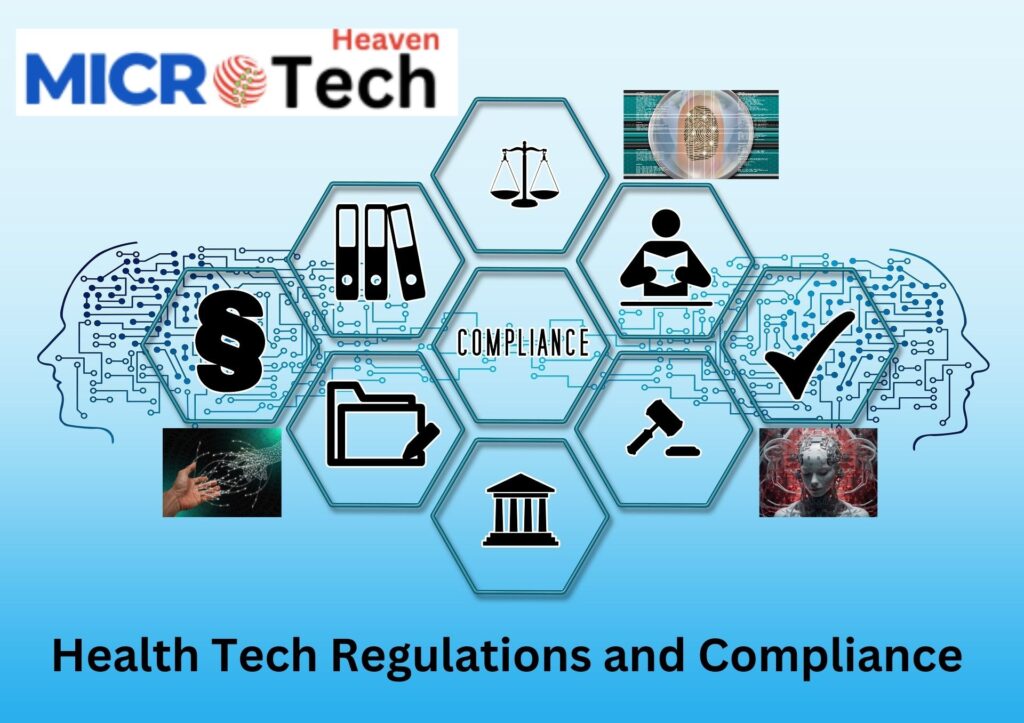Future of Wearable Tech in Healthcare
Index
Table of Contents
Introduction
Health Tech Regulations and Compliance play a crucial role in safeguarding patient information and guiding the development of digital health solutions.Technology is transforming healthcare, making it easier to manage records, consult doctors remotely, and deliver better care. But with these innovations come responsibilities—especially around following the rules and keeping patient data safe.
This guide explains health tech compliance in plain terms and helps you understand the rules that organizations need to follow to protect patients and stay on the right side of the law.
Understanding Health Tech Compliance
What is Regulatory Compliance?
Regulatory compliance means following the laws and rules that apply to healthcare technology. For example, if you’re storing patient records electronically, you need to follow specific guidelines to ensure their safety and privacy.
Why Compliance Matters in Health Tech
- Protecting Patients: Ensures sensitive health data stays private and secure.
- Avoiding Penalties: Helps organizations avoid hefty fines and lawsuits.
- Building Trust: Shows patients that you’re serious about keeping their information safe.
Key Regulations in Health Tech
HIPAA (Health Insurance Portability and Accountability Act)
HIPAA is a U.S. law that requires healthcare providers and tech companies to keep patient information private and secure. It covers everything from electronic health records (EHR) to how you share patient data.
GDPR (General Data Protection Regulation)
If you work with patients in Europe, GDPR applies. It ensures people have control over their personal information and requires companies to protect that data carefully.
FDA Regulations
The FDA makes sure that medical devices and healthcare software are safe and effective. If your technology helps with diagnosis or treatment, you’ll need FDA approval before releasing it to the public.
State and Local Rules
In addition to national laws, each state or region might have its own rules about data privacy and security.

Steps to Stay Compliant
1. Identify the Rules That Apply to You
Start by figuring out which regulations apply to your organization based on your location, services, and the type of data you handle.
2. Build a Compliance Plan
Once you know the rules, create a plan to meet them. Include:
- Training programs for employees.
- Regular checks to make sure you’re following the rules.
- A clear process for handling any data breaches.
3. Secure Your Data
Strong data protection is key to compliance. Steps include:
- Encryption: Scramble data so only authorized users can read it.
- Access Controls: Limit who can view or edit sensitive information.
Software Updates: Keep systems updated to block security threats.
Challenges in Health Tech Compliance
- Too Many Rules: Navigating overlapping regulations can be confusing.
- Tech Changes Quickly: Staying compliant while adopting new tools is tricky.
- Limited Resources: Smaller organizations may lack the staff or budget for compliance.
Tips for Staying Compliant
- Train Your Team: Regularly teach employees about compliance requirements.
- Perform Audits: Check your processes regularly to catch any issues early.
- Use Compliance Tools: Software can help track regulations and simplify reporting.
Conclusion
Staying compliant in health tech is essential for protecting patients, avoiding fines, and building trust. By understanding the key regulations, developing a solid plan, and following best practices, organizations can navigate the challenges of compliance and focus on delivering great care.
FAQs
1. What are the main rules for health tech compliance?
Key regulations include HIPAA, GDPR, FDA guidelines, and state-specific rules.
2. Why is compliance important?
Compliance protects patient data, avoids legal issues, and builds trust with users.
3. How can organizations stay compliant?
By training staff, conducting audits, and using tools to stay updated on regulations.
4. What challenges do organizations face?
Common challenges include complex rules, fast-changing technology, and limited resources.
This guide gives you the basics to start understanding and navigating health tech compliance with confidence.


